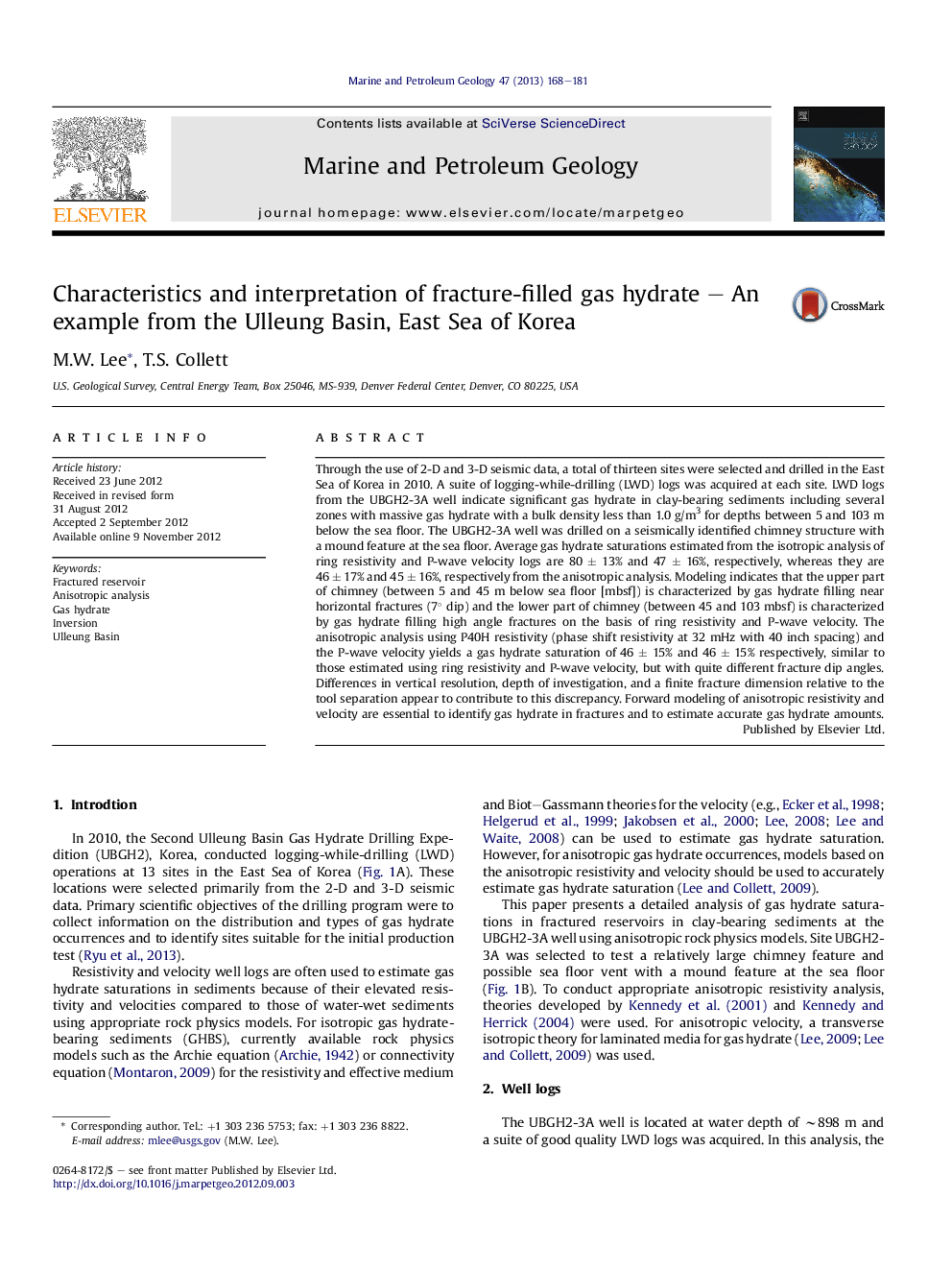| کد مقاله | کد نشریه | سال انتشار | مقاله انگلیسی | نسخه تمام متن |
|---|---|---|---|---|
| 4695752 | 1637177 | 2013 | 14 صفحه PDF | دانلود رایگان |
Through the use of 2-D and 3-D seismic data, a total of thirteen sites were selected and drilled in the East Sea of Korea in 2010. A suite of logging-while-drilling (LWD) logs was acquired at each site. LWD logs from the UBGH2-3A well indicate significant gas hydrate in clay-bearing sediments including several zones with massive gas hydrate with a bulk density less than 1.0 g/m3 for depths between 5 and 103 m below the sea floor. The UBGH2-3A well was drilled on a seismically identified chimney structure with a mound feature at the sea floor. Average gas hydrate saturations estimated from the isotropic analysis of ring resistivity and P-wave velocity logs are 80 ± 13% and 47 ± 16%, respectively, whereas they are 46 ± 17% and 45 ± 16%, respectively from the anisotropic analysis. Modeling indicates that the upper part of chimney (between 5 and 45 m below sea floor [mbsf]) is characterized by gas hydrate filling near horizontal fractures (7° dip) and the lower part of chimney (between 45 and 103 mbsf) is characterized by gas hydrate filling high angle fractures on the basis of ring resistivity and P-wave velocity. The anisotropic analysis using P40H resistivity (phase shift resistivity at 32 mHz with 40 inch spacing) and the P-wave velocity yields a gas hydrate saturation of 46 ± 15% and 46 ± 15% respectively, similar to those estimated using ring resistivity and P-wave velocity, but with quite different fracture dip angles. Differences in vertical resolution, depth of investigation, and a finite fracture dimension relative to the tool separation appear to contribute to this discrepancy. Forward modeling of anisotropic resistivity and velocity are essential to identify gas hydrate in fractures and to estimate accurate gas hydrate amounts.
Journal: Marine and Petroleum Geology - Volume 47, November 2013, Pages 168–181
